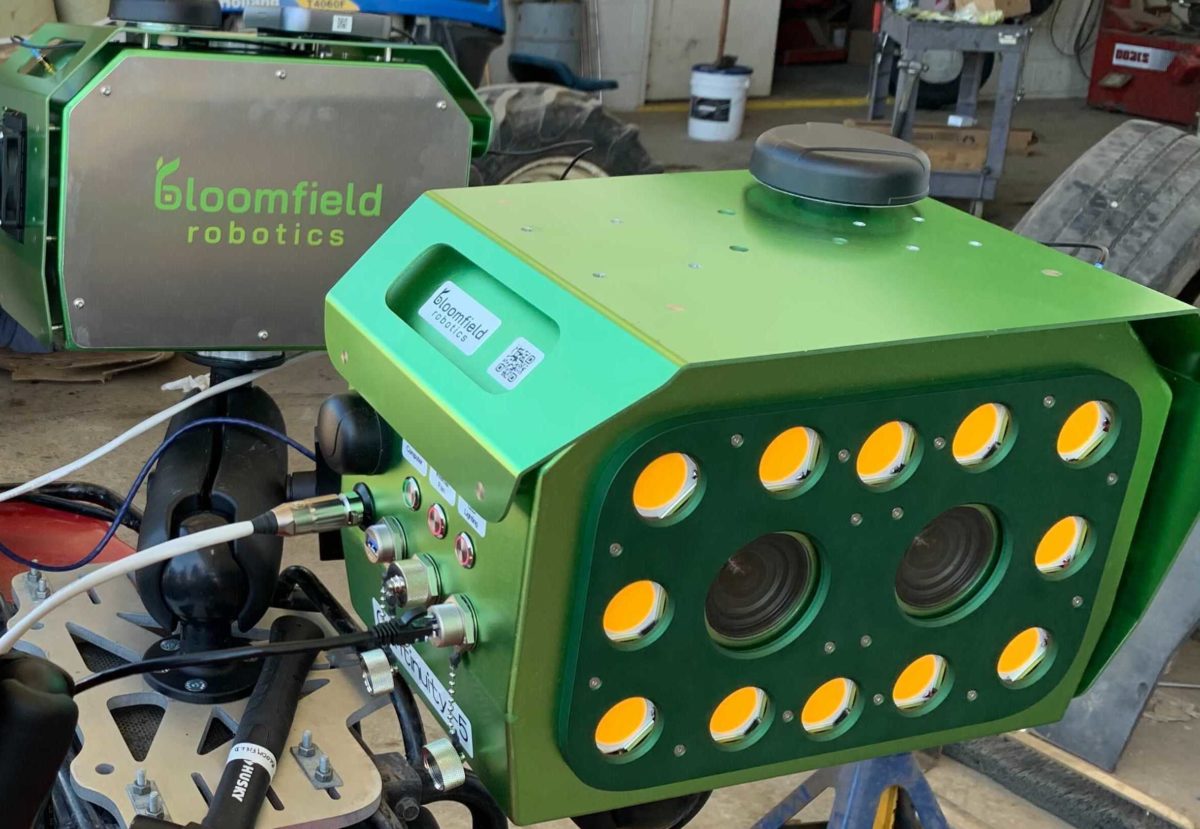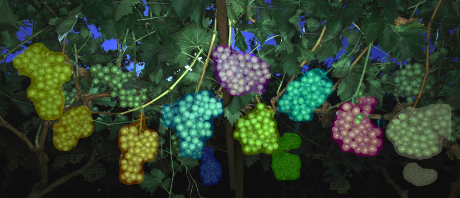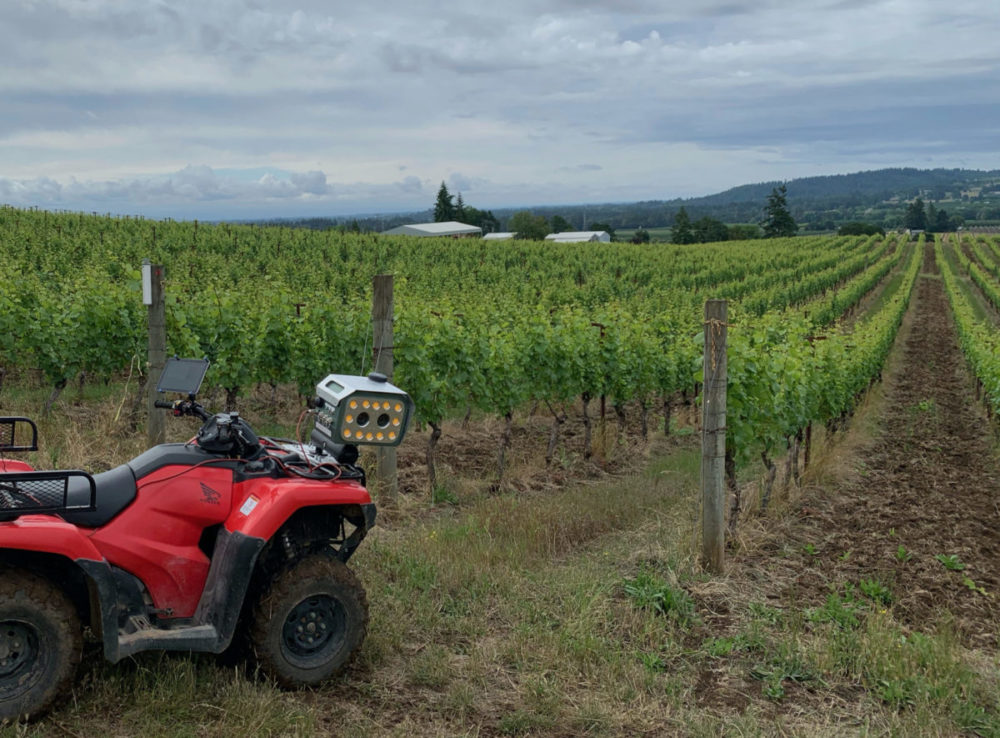A Bloomfield-based startup wants to reduce crop, resource and labor waste by bringing AI-driven robotics to the farm.
Founded in 2019 as a spinout from Carnegie Mellon University, Bloomfield Robotics built its business on research led by George Kantor, a senior systems scientist at the university’s robotics institute. He is now Bloomfield Robotics’ chief scientist, working with CEO Mark DeSantis, who himself is an adjunct professor at CMU with a background in robotics startups, venture capital and investment banking.
Agricultural tech — called agtech for short — is the overlap of farming and horticulture with technology, usually for the purpose of improving crop yield or harvest efficiency. That’s usually good for the environment too, as those goals go hand in hand with limiting food and natural resource waste on farms.
Bloomfield Robotics does this through the use of a smart stereo vision camera, dubbed Bloomfield FLASH. Farmers and growers can simply attach the device to vehicles like ATVs or tractors, and the camera will take pictures of plants as it moves through the fields. These images provide farmers with information about plant color, size and number of fruit or other features that might be relevant to plant health. Along with the use of stereo vision—which allows the camera to perceive depth as a human eye would—Bloomfield FLASH also emits its own flash with each image, so that it’s not reliant on natural light for high quality images.
“So you create your own flash on the device—that’s why it’s called FLASH—and drive, and then that data is captured on a camera,” said DeSantis. “And eventually, when that camera sees a friendly Wi-Fi, or we just pull it off the camera, it goes up to the cloud.”
Once those plant pictures are in the cloud, the Bloomfield Robotics team analyzes them through deep learning to create virtual visual renderings of the images to assess plant health and viability.
“Number one, we’re evaluating that plant—the AI is—in the same way that a botanist, horticulturalist or agronomist would,” DeSantis said of how the technology might operate at one of the company’s vineyard clients. “They’re actually looking at the things like the size, the number of grapes, the density, the shape of the cluster, leaf density. But they’re also looking for things like disease and infestation.”
The Bloomfield FLASH camera also collects geolocation data, so that growers can keep continuous track of plant progress over time, and more easily revisit areas where crops might be struggling. That’s a big improvement from current crop inspection methods, which typically rely on assessment from the human eye, limiting inspectors to less than an acre of inspection a day. With both the camera and its artificial intelligence platform, Bloomfield Robotics saves labor costs while also providing a more thorough and objective view of the entire farm in a much more efficient way.

But beyond the increased scalability and even-handed analysis of plant viability, DeSantis noticed that Bloomfield Robotics’ clients are also attracted to the idea of having a sort of virtual map of their fields.
“That’s sort of an emerging value proposition for us — the idea that you have now a digitalized digitalize record of the entire venue,” he said. You’re literally creating a digital twin of the vineyard. And you’re doing that repeatedly. You’ll have that data forever.”
Keeping track of this information for farmers helps them use their resources more sustainably.
“You’re using water and nutrients, which are challenging, much more efficiently,” said DeSantis. “And so that’s really what it’s about in the end, is to try to maximize the performance of the assets—people, water, nutrients, sunlight, all those things.”
Outside of the basic environmental benefits that come with increased efficiency, DeSantis also mentioned the potential for the camera to help track the presence of both environmentally friendly and environmentally harmful qualities in plants, specifically naming an experiment the company did to measure the amount of woody mass on a vineyard in France.
So far, Bloomfield Robotics mostly operates in 15 vineyards in four countries and one blueberry grower in Peru. DeSantis describes the company as “crop agnostic” within the specialty crop industry, meaning crops that typically have a higher dollar value per acre and also require more intense inspection regimens.

Since launching in 2019, Bloomfield Robotics has earned about $1.1 million from grants, including one from NASA to help develop a version of the Bloomfield FLASH to operate in the greenhouse at the International Space Station. The company has also raised another $1.1 million in funding, which DeSantis said has allowed for further product development and early revenue generation.
Bloomfield Robotics also recently completed SVG Ventures‘ prestigious THRIVE accelerator program, where it won the Innovation Icon Award during the final demonstration day at the Forbes THRIVE Future of Food summit. That win was a big step for the company, said DeSantis.
“That gives us SVG’s street cred for investment and partnering because its sponsors include every major agtech player you can think of,”he said.
And this week, Bloomfield Robotics will be one of seven local startups competing at the OneValley Pittsburgh Startup Challenge, which will also launch a new innovation center at Hazelwood Green.
DeSantis hopes to raise another round of funding and continue growing the business over the next year, including hiring both software engineers and plant scientists, as well as sales and marketing pros. And even though Bloomfield Robotics has customers across the globe, the company plans to keep operations in Pittsburgh.
“I don’t know that I would have said that 20 years ago, I think it was still kind of emerging,” said DeSantis. “But now you have the talent and the wherewithal here to build any kind of tech company you want.”







